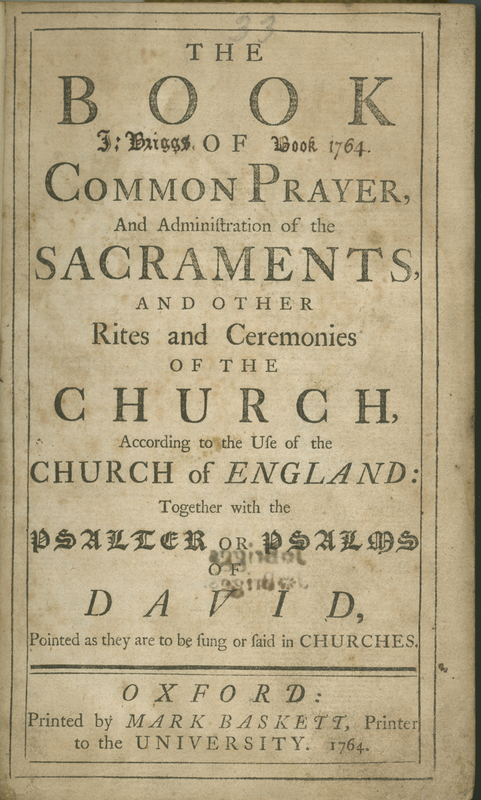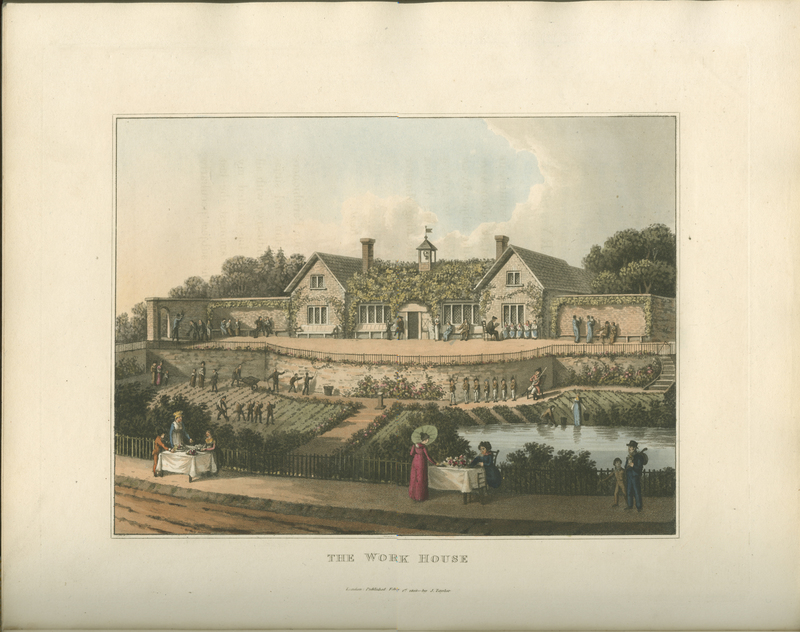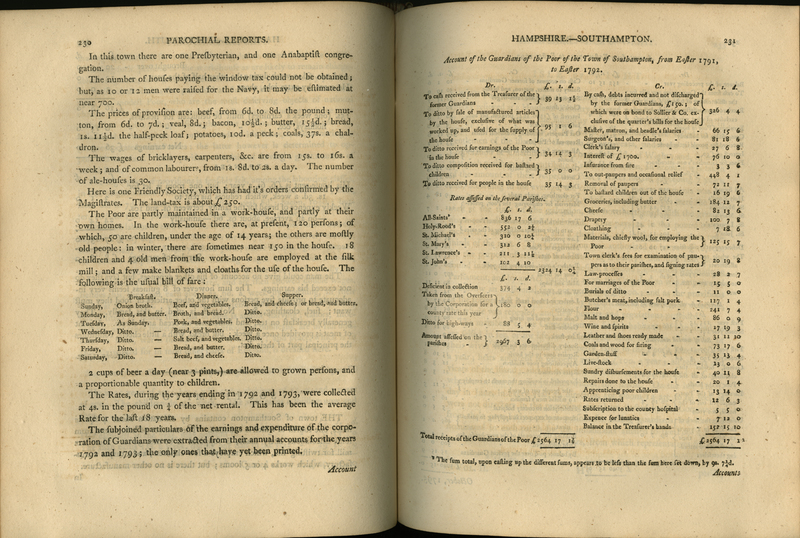Poverty
Humphry Repton is best known as a landscape designer who transformed large estates of the landed gentry. Fragments…, produced in collaboration with his son, John Adey Repton, a trained architect, shows that Humphry Repton also turned his attention to improving the living conditions of the poor. During this period, relief for the poor generally came through parish-controlled workhouses, where the poor were housed and, if able-bodied, put to work. Attempting to imagine a layout that would mitigate the miseries of overcrowding and unsanitary conditions in workhouses, Repton here proposes a model for a workhouse emphasizing a healthier environment.
Like many of his renderings of garden landscapes, this proposed design for renovating a workhouse in Kent is orderly, balanced, and spacious. In a note on the design, Repton explains that he set aside space for the elderly and infirm to enjoy the sun and for children to be taught “useful labour,” such as gardening and drills that would prepare young men “to become the future defenders of their Country.” Unfortunately, as Repton notes, this plan was never put into action because the parish leaders realized that the proposed site would be more profitable if developed into private houses.
An insurance company manager who was also deeply interested in socioeconomic issues, especially as related to the poor, Frederick Eden was inspired to write his report on poverty in England during an acute grain shortage from 1794-5. Eden, along with a few clergymen and an investigator, spent a year visiting parishes throughout England to gather detailed information about conditions affecting the poor, including enumerating what kind of local manufacturing existed, how many people were employed by area factories, and tax revenues versus expenses in each workhouse. The copy here is open to the page on Southampton, where Austen lived between 1806 and 1809 before moving to Chawton.

Religion

Social Mobility


